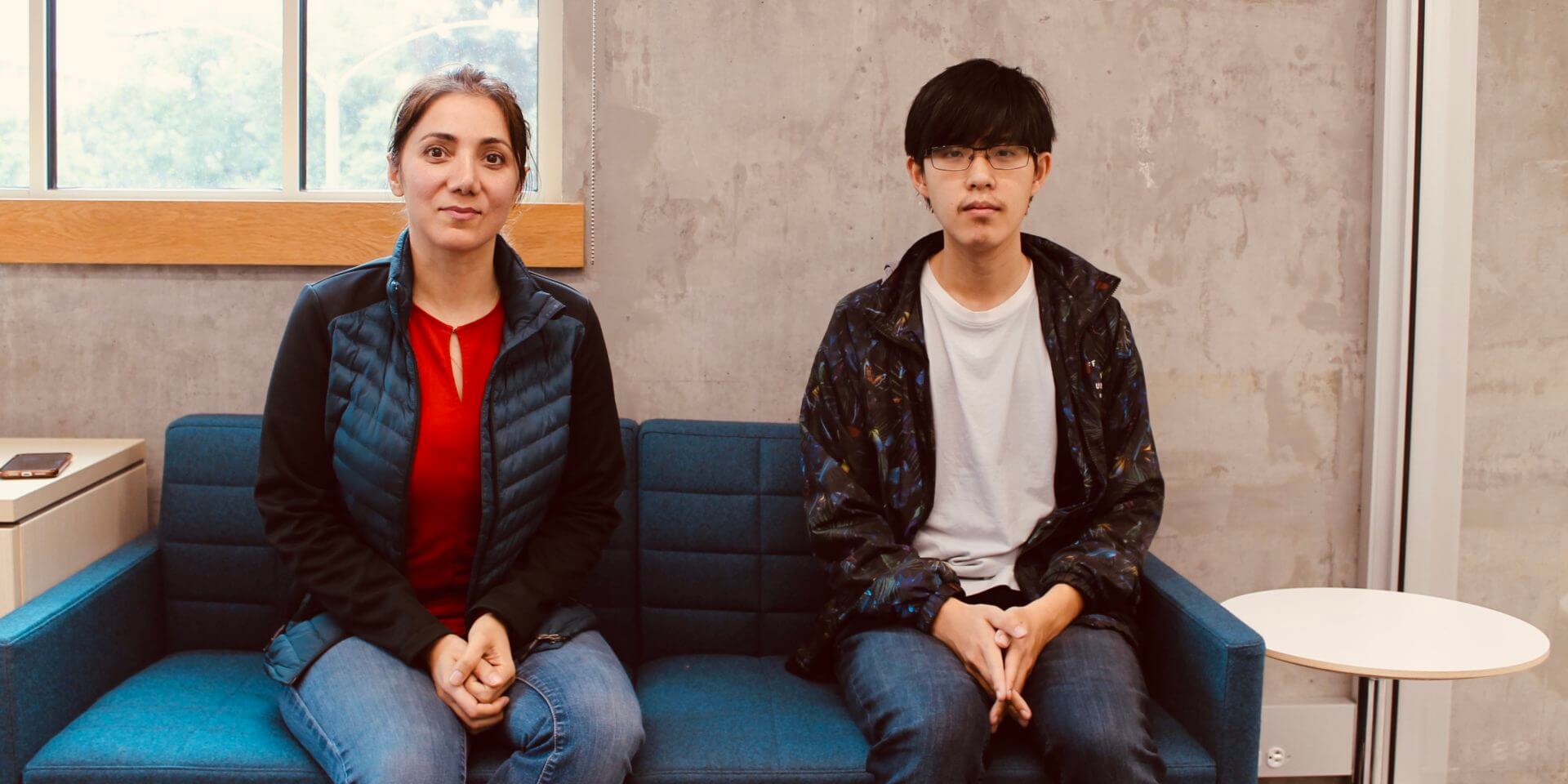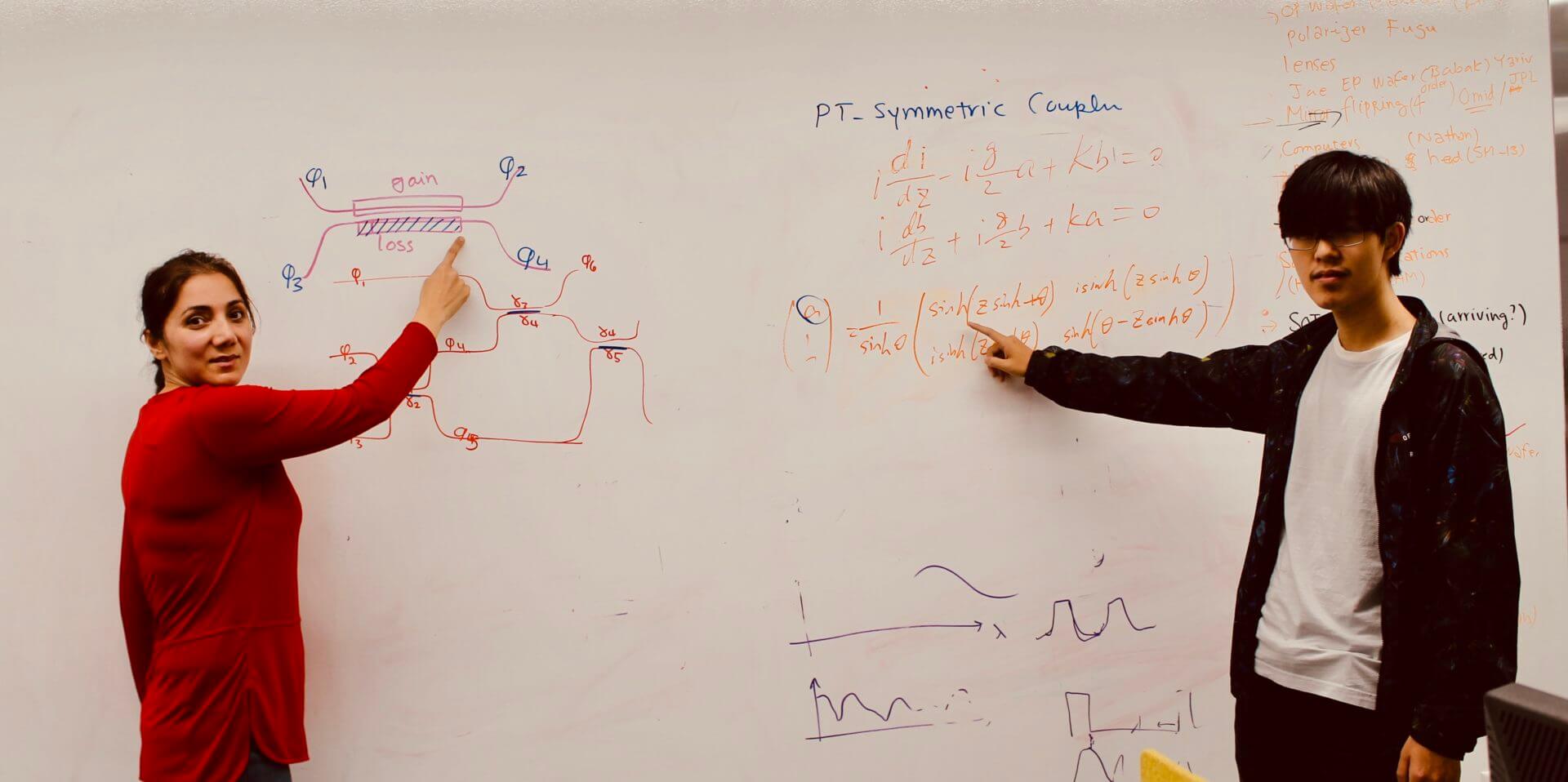
Professor Mercedeh Khajavikhan (left) and undergrad Haoqin Deng combined their different backgrounds to improve AI technology (PHOTO CREDIT: USC Viterbi)
Sometimes unlikely collaborations can result in surprising advances. That’s what happened when Mercedeh Khajavikhan, associate professor of electrical and computer engineering, and expert in photonics, was introduced to Haoqin Deng, an electrical and computer engineering undergrad interested in neural networks. The result of their collaboration, recently published in Optica, was nothing less than an entirely new tool to help make AI faster, more efficient, and more powerful.
Although both these researchers are electrical and computer engineers, ECE one of the broadest engineering disciplines and touches on many important areas, from medical imaging, to artificial intelligence, to satellite design, and many more.
“My research is traditionally focused on designing better communications, sensing, and signal processing hardware systems through advanced photonics,” said Khajavikhan. “I learned about neural networks as an undergrad, but it’s never been something I closely addressed in my research.”
This collaboration speaks to the value of bringing in young researchers…USC Viterbi has a great culture of encouraging research among our younger students and Haoqin’s work has really changed my perspective.
– Mercedeh Khajavikhan
And yet, over the years Khajavikhan’s area of expertise has come to play a larger role in neural networks than she would have once imagined. That role has come in the form of an advanced, but still in-the-works device known as an optical photonic chip. You can think of this as the chip version of optical vs. electronic communications, where light signals at optical frequencies carry information. In the same way fiber optics is faster and better than wired communications, an optical photonic chip promises to do the same for the computing capacity of our traditional chips.
So what does this mean for neural networks? “A neural network must be trained,” said Deng. “Just like a baby learning to distinguish between objects, we have to teach a new neural network how to recognize the world around it.”
One thing you need to efficiently train a network is a powerful chip. The better the chip, the better the training. The better the training, the better the network. If you’ve been following along up to this point, you already know that an optical photonic chip has the potential to be better than current chips. So, it would stand to reason that an optical photonic chip would be better at training a neural network than a traditional chip. In particular, optics can perform matrix-vector product more efficiently than electronic circuits. However, tuning current optical integrated chips to do the training can become energy-consuming and slow.
And this is where the collaboration between the two really got going. With Khajavikhan’s experience in designing photonic devices, and Deng’s background in training neural networks, the two were able to come up with an entirely new approach that uses active photonic platforms for training such networks. Instead of building the setup on a passive chip and using large and energy inefficient phase shifters for tuning, they used properties of III-V semiconductor compounds to build an easily tunable and trainable system.

Combining Khajavikhan’s background in photonics with Deng’s experience designing neural networks helped build a novel chip and a faster network. (PHOTO CREDIT: USC Viterbi)
“We used a structure called parity-time symmetric coupler as a building block to train our networks,” said Khajavikhan. “Our new approach has proven that training a system with these new components can be done much faster, cheaper, and more compactly.”
Indeed, one of the major problems preventing optical neural networks from taking off is they can get very big and hard to maintain. Using this new technique, however, Khajavikhan and Deng were able to build a tool to use in optical neural networks that is ten times smaller than our current best options. But wait, there’s even more.
Instead of just building the chip to support neural networks, the team is actually building a neural network all of their own – something entirely new to Khajavikhan, who credits Deng with helping her to expand her research. “This collaboration speaks to the value of bringing in young researchers and diversifying your research portfolio,” she said. “USC Viterbi has a great culture of encouraging research among our younger students and Haoqin’s work has really changed my perspective. I look forward to working with him and other young researchers more.”
Khajavikhan is grateful for the support from ONR and AFOSR that made this research possible.
Published on November 10th, 2021
Last updated on November 10th, 2021










